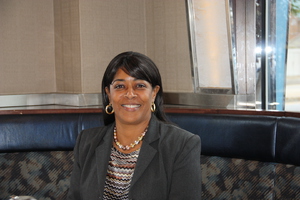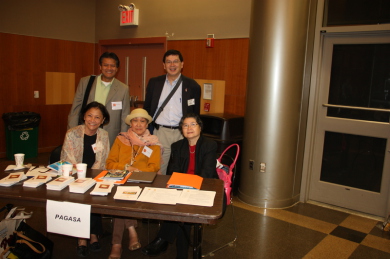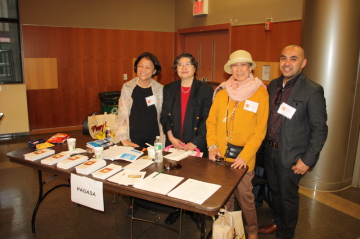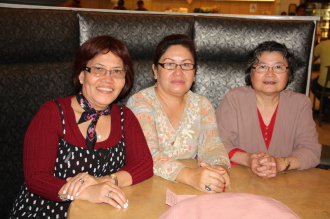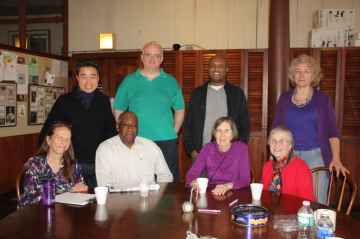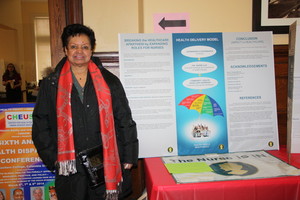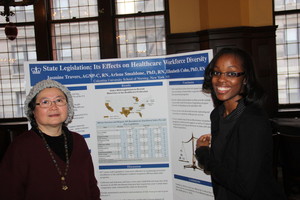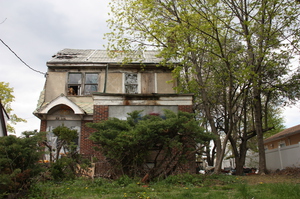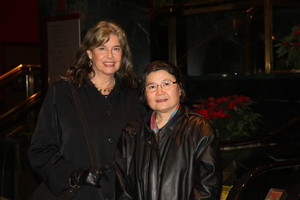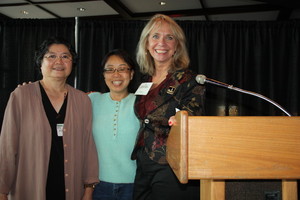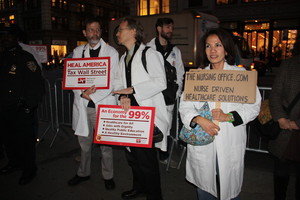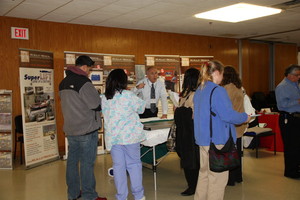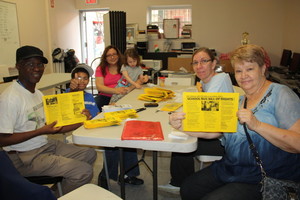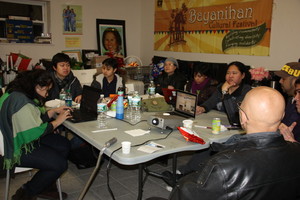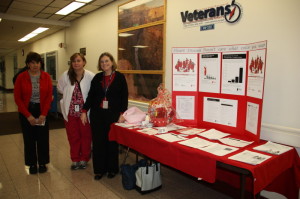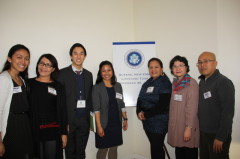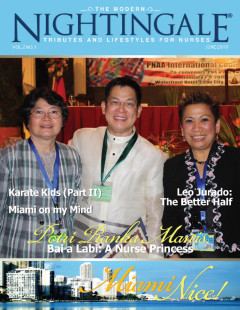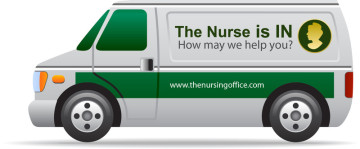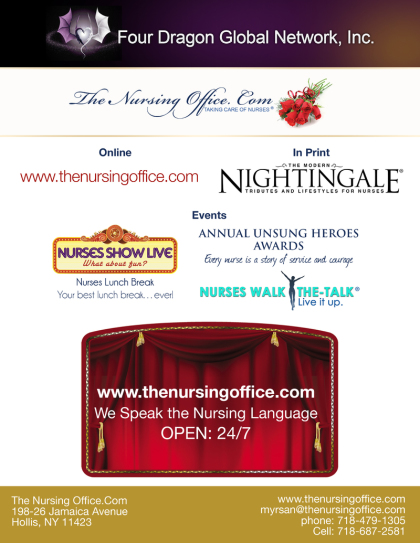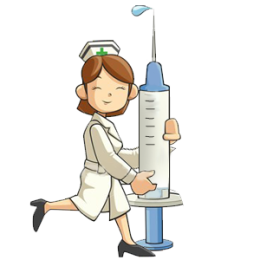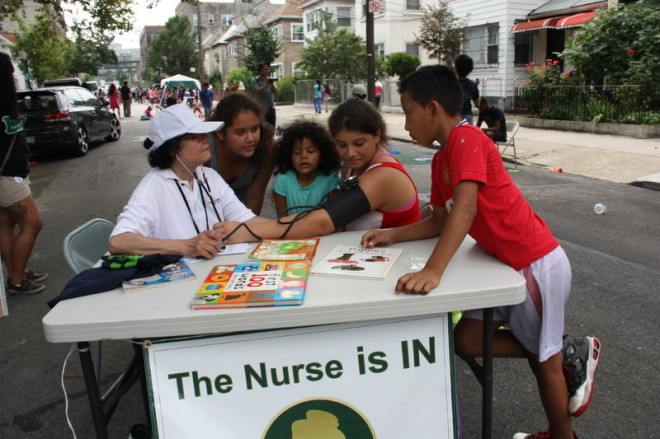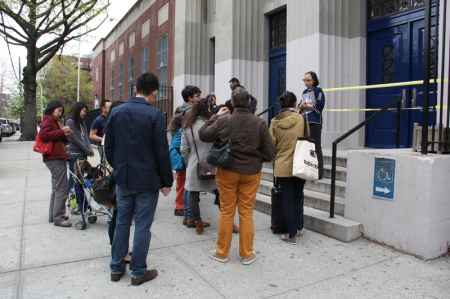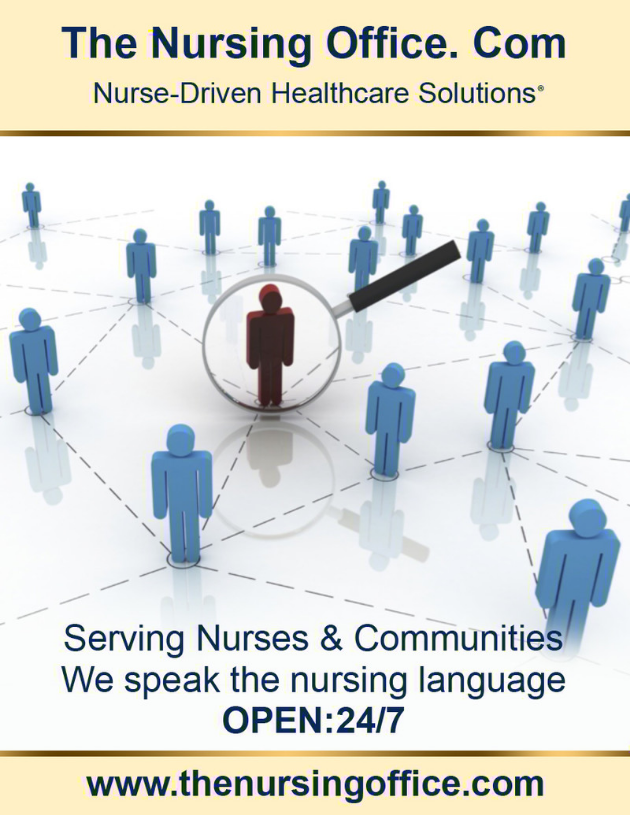INFLUENCING THE FUTURE OF HEALTHCARE
TRANSFORMING HEALTHCARE THROUGH NURSING LEADERSHIP
BACKGROUND: EMPOWERING NURSES
The RWJF Initiative on the Future of Nursing at IOM
The Future of Nursing
Leading Change, Advancing Health
OCTOBER 2010
With more than 3 million members, the nursing profession is the largest segment of the nation’s health care workforce. Working on the front lines of patient care, nurses can play a vital role in helping realize the objectives set forth in the 2010 Affordable Care Act, legislation that represents the broadest health care overhaul since the 1965 creation of the Medicare and Medicaid programs. A number of barriers prevent nurses from being able to respond effectively to rapidly changing health care settings and an evolving health care system. These barriers need to be overcome to ensure that nurses are well-positioned to lead change and advance health.
In 2008, The Robert Wood Johnson Foundation (RWJF) and the Institute of Medicine (IOM) launched a two-year initiative to respond to the need to assess and transform the nursing profession. The IOM appointed the Committee on the RWJF Initiative on the Future of Nursing, at the IOM, with the purpose of producing a report that would make recommendations for an action-oriented blueprint for the future of nursing.
Nurses practice in many settings, including hospitals, schools, homes, retail health clinics, long-term care facilities, battlefields, and community and public health centers. They have varying levels of education and competencies—from licensed practical nurses, who greatly contribute to direct patient care in nursing homes, to nurse scientists, who research and evaluate more effective ways of caring for patients and promoting health. The committee considered nurses across roles, settings, and education levels in its effort to envision the future of the profession. Through its deliberations, the committee developed four key messages that structure the recommendations presented in this report:
A number of barriers prevent nurses from being able to respond effectively to rapidly changing health care settings and an evolving health care system. These barriers need to be overcome to ensure that nurses are well-positioned to lead change and advance health.
1) Nurses should practice to the full extent of their education and training. While most nurses are registered nurses (RNs), more than a quarter million nurses are advanced practice registered nurses (APRNs), who have masters or doctoral degrees and pass national certification exams. Nurse practitioners, clinical nurse specialists, nurse anesthetists, and nurse midwives all are licensed as APRNs.
Because licensing and practice rules vary across states, the regulations regarding scope-of-practice—which defines the activities that a qualified nurse may perform—have varying effects on different types of nurses in different parts of the country. For example, while some states have regulations that allow nurse practitioners to see patients and prescribe medications without a physician’s supervision, a majority of states do not. Consequently, the tasks nurse practitioners are allowed to perform are determined not by their education and training but by the unique state laws under which they work.
The report offers recommendations for a variety of stakeholders—from state legislators to the Centers for Medicare & Medicaid Services to the Congress—to ensure that nurses can practice to the full extent of their education and training. The federal government is particularly well suited to promote reform of states’ scope-of-practice laws by sharing and providing incentives for the adoption of best practices. One sub-recommendation is directed to the Federal Trade Commission, which has long targeted anti-competitive conduct in the health care market, including restrictions on the business practices of health care providers, as well as policies that could act as a barrier to entry for new competitors in the market.
High turnover rates among new nurses underscore the importance of transition-to-practice residency programs, which help manage the transition from nursing school to practice and help new graduates further develop the skills needed to deliver safe, quality care. While nurse residency programs sometimes are supported in hospitals and large health systems, they focus primarily on acute care. However, residency programs need to be developed and evaluated in community settings.
2) Nurses should achieve higher levels of education and training through an improved education system that promotes seamless academic progression. To ensure the delivery of safe, patient-centered care across settings, the nursing education system must be improved. Patient needs have become more complicated, and nurses need to attain requisite competencies to deliver high-quality care. These competencies include leadership, health policy, system improvement, research and evidence-based practice, and teamwork and collaboration, as well as competency in specific content areas including community and public health and geriatrics. Nurses also are being called upon to fill expanding roles and to master technological tools and information management systems while collaborating and coordinating care across teams of health professionals.
Nurses must achieve higher levels of education and training to respond to these increasing demands. Education should include opportunities for seamless transition into higher degree programs—from licensed practical nurse (LPN)/licensed vocational nurse (LVN) diplomas; to the associate’s (ADN) and bachelor’s (BSN) degrees; to master’s, PhD, and doctor of nursing practice (DNP) degrees. Nurses also should be educated with physicians and other health professionals both as students and throughout their careers in lifelong learning opportunities. And to improve the quality of patient care, a greater emphasis must be placed on making the nursing workforce more diverse, particularly in the areas of gender and race/ethnicity.
3)Nurses should be full partners, with physicians and other health care professionals, in redesigning health care in the United States.
Efforts to cultivate and promote leaders within the nursing profession—from the front lines of care to the boardroom—will prepare nurses with the skills needed to help improve health care and advance their profession. As leaders, nurses must act as full partners in redesign efforts, be accountable for their own contributions to delivering high-quality care, and work collaboratively with leaders from other health professions.
Being a full partner involves taking responsibility for identifying problems and areas of system waste, devising and implementing improvement plans, tracking improvement over time, and making necessary adjustments to realize established goals. In the health policy arena, nurses should participate in, and sometimes lead, decision making and be engaged in health care reform-related implementation efforts. Nurses also should serve actively on advisory boards on which policy decisions are made to advance health systems and improve patient care.
In order to ensure that nurses are ready to assume leadership roles, nursing education programs need to embed leadership-related competencies throughout. In addition, leadership development and mentoring programs need to be made available for nurses at all levels, and a culture that promotes and values leadership needs to be fostered. All nurses must take responsibility for their personal and professional growth by developing leadership competencies and exercising these competencies across all care settings.
4) Effective workforce planning and policy making require better data collection and an improved information infrastructure.
Planning for fundamental, wide-ranging changes in the education and deployment of the nursing workforce will require comprehensive data on the numbers and types of health professionals—including nurses—currently available and required to meet future needs. Once an improved infrastructure for collecting and analyzing workforce data is in place, systematic assessment, and projection of workforce requirements by role, skill mix, region, and demographics will be needed to inform changes in nursing practice and education.
The 2010 Affordable Care Act mandates the creation of both a National Health Care Workforce Commission to help gauge the demand for health care workers and a National Center for Workforce Analysis to support workforce data collection and analysis. These programs should place a priority on systematic monitoring of the supply of health care workers across professions, review of the data and methods needed to develop.
To ensure the delivery of safe, patient-centered care across settings, the nursing education system must be improved. Patient needs have become more complicated, and nurses need to attain requisite competencies to deliver high-quality care.
Conclusion
The United States has the opportunity to transform its health care system, and nurses can and should play a fundamental role in this transformation. However, the power to improve the current regulatory, business, and organizational conditions does not rest solely with nurses; government, businesses, health care organizations, professional associations, and the insurance industry all must play a role.
The recommendations presented in this report are directed to individual policy makers; national, state, and local government leaders; payers; and health care researchers, executives, and professionals—including nurses and others—as well as to larger groups such as licensing bodies, educational institutions, philanthropic organizations, and consumer advocacy organizations. Working together, these many diverse parties can help ensure that the health care system provides seamless, affordable, quality care that is accessible to all and leads to improved health.
The Nurse is IN: A Model for Affordable Community and Public Health Delivery System
Inspired and empowered by the Institute of Medicine (IOM) reports and recommendations from Robert Wood Johnson Foundation to influence the future of nursing and healthcare, The Nursing Office.Org has developed a model of affordable healthcare delivery system to address issues of disparity and inequity, if not the ineffectiveness of the current system in a multi-cultural social structure of our communities. Hence, professional nurses respond to the call for a transformation in the system responsive to the unmet needs of minorities, ethnic groups and marginalized population of both urban and rural America as well as the global community and become catalysts for change.
The Nurse is IN is a program with evidenced-based Nurse Driven Healthcare Solutions designed consistent with the goals of Healthy People 2020, including social issues of homelessness, poverty, and unemployment. It includes basic, natural, holistic and practical solutions based on the current socio-cultural and economic state to build Basic Community Living Infrastructure, featuring individual, family and community oriented, collaborative, participative, culturally sensitive, integrative means, in a structured Community Health Center, run by the community for the community.
The multiple roles of nurse as leader, trainer, educator, healer, innovator, and the very essence of professional nursing practice will make them the communicator and middle man in its linear model of delivery directly from the top legislative and executive sources to the public and the community through Community Healthcare Workers (CHW) who will be chosen from among them and be trained to work with their own people.
This model will ease the nursing shortage, maximizing nurses’ role in healthcare, create jobs and reduce unemployment and reduce healthcare cost through effective use of resources. Its essential delivery components include Capacity Building &Training, Health Education & Promotion, Advocacy & Political Action, Outreach & Network Development, Research, Sustainability and Effective Communications.
This affordable community and public health delivery include Finding Venues to Reach Out, Public Health Education, Designing Effective Health Fairs, Community Partnerships, Political Action, Finding Resources, Effective Use of Resources, Pointing out the Target Communities, Empowering Nurses and Leadership, Utilizing Community and Allied Health Healthcare Workers, Empowering Communities.
It is our sincerest way to deliver our message of caring for communities, delivering public healthcare for all, resolving health disparities and promoting equality and equity for people of color and challenging the healthcare apartheid. It is a sign of our presence in the community and living up with the expectations of the people’s trust.
The Nurse is IN: “How may we help you?”
Myrna D. Santos, MSN, RN
Bring in the nurses stat
By SUSAN B. HASSMILLER AND SUSAN REINHARD
Tribune News Service December 18, 2014
Some of the largest health care systems in America do not have any nurses serving on their boards of directors. That is a huge oversight, especially in a time of rapid change in health care delivery, when consumers and providers would benefit from having nurses' frontline perspective present in boardrooms as health care policy decisions are made.
Last month, nurse leaders from 21 national nursing and other health-related organizations came together to change that. The nursing leaders launched the national Nurses on Boards Coalition, which has a goal to put 10,000 nurses on boards of corporate and nonprofit health care organizations by 2020.
The effort is a direct response to the Institute of Medicine's (IOM) call in 2010 for nurses to play more pivotal decision-making roles on boards and commissions in improving the health of all Americans. The IOM's landmark report, "The Future of Nursing: Leading Change, Advancing Health," established that strong leadership from nurses is an essential element in transforming health care delivery and improving patient care.
It seems the IOM's call has not reached much of America.
The American Hospital Association's (AHA) Trustee Magazine in September summed it up best: "Without a nurse trustee, boards lack an authority on the patient experience, quality and safety, and perspective from the largest part of the hospital workforce."
The absence of nurses in leadership positions comes as hospitals, medical groups and insurance companies claim they've become more patient-friendly in a health care system increasingly putting more emphasis on prevention.
While doctors fill 20 percent of hospital board seats, nurses comprise just 6 percent, reported Trustee Magazine, which cited the most recent American Hospital Association governance survey.
The dearth of nurses serving on boards stands in stark contrast to the fact that nurses comprise the largest segment of the U.S. health care workforce - at 3 million strong. More than any other health care provider, nurses bring the perspective of the patient.
Consider that nursing practice covers health promotion, disease prevention, coordination of care, cure and palliative care when cure is not possible. Nurses provide the majority of care in hospitals, nursing homes, clinics and outpatient settings. They are on the frontlines in making sure care is delivered safely, effectively and compassionately in these and other settings. And nurses are the ones who not only tend to patients' physical health needs but also respond to their social, mental and spiritual needs.
With federal health care reform, health care providers are in the midst of reworking care delivery to make it more accessible, accountable and affordable, while putting an emphasis on prevention and primary care. Nurses already play a huge role on the frontlines. It's time they begin playing a role in the boardroom too, bringing both their practical sensibilities and view of patient care experiences to the table.
The nation's largest health care philanthropy, the Robert Wood Johnson Foundation (RWJF), and the 38 million-member AARP, believe nurses must have a voice in the boardrooms of the health care organizations we trust to care for us. Backed by RWJF and AARP, the Future of Nursing: Campaign for Action is driven by the IOM's evidence-based recommendations. Nurse representation is our best hope of truly achieving high-quality care that is accessible, affordable and compassionate.
ABOUT THE WRITERS
Susan B. Hassmiller, PhD, RN, FAAN, is the Robert Wood Johnson Foundation (RWJF) senior adviser for nursing and director of the Future of Nursing: Campaign for Action.
Susan Reinhard, RN, PhD, FAAN, is a senior vice president at AARP where she directs its Public Policy Institute and is chief strategist for AARP's Center to Champion Nursing in America, a joint initiative with RWJF.
Readers may send them mail at campaignforaction@aarp.org.
This essay is available to Tribune News Service subscribers. Tribune did not subsidize the writing of this column; the opinions are those of the writer and do not necessarily represent the views of Tribune or its editors.
Read more here:
http://www.mcclatchydc.com/2014/12/18/250456/bring-in-the-nurses-stat.html#storylink=cpy
TRANSFORMING HEALTHCARE THROUGH NURSING LEADERSHIP
NURSES: The Future of Healthcare
GOALS: The new imperative for nurses will require a truly diverse, experienced and committed set of leaders for:
- Global Initiatives for Urban Health
- Advancing a Culture of Heath in the US
- Evidenced Based Actions for disease prevention and health promotion health in cities
- Policies and Programs for Urban Health
- Shaping healthcare system
- Increasing access to delivering better care
- Minimizing costs for both consumers and business
- Assuming roles in healthcare coaching, prevention activities and quality improvements
- OBJECTIVES:
- Discuss critical issues and concerns facing professional nursing education and development.
- Address unique challenges in delivery of healthcare
- Development of strategies for effectively managing challenges encountered in the workforce.
A Nurse Responds to IOM Challenge
CAMPAIGN FOR NURSE DRIVEN HEALTHCARE SOLUTION
DURING COVID PANDEMIC TIMES
As a nurse in this unprecedented time of Corona Virus pandemic, I cannot help but find a way to help the community and do my share in this greatest challenge of the 21st Century in the heights of technical, science, medical, financial and social developments.
In my musings in FB which became one of the widest venues of connections and information channel, I have conceptualized a way to use it as a tool to this Actual Real-Time Descriptive Research on the COVID -19 that continue to claim lives and resources, a global plague.
This descriptive research will include a wide range and extensive review of literature and content about a virus that came and kill, from the joint perspective of every scientists, doctors, nurses and the community that has in anyway affect the way the individuals and the world respond to live and survive in this uncertain time from an unseen enemy, a virus known as COVID-19.
In this Pandemic Era, the government leaders are called to protect its people, from the highest laws of the land, not to instill fear but convince the millions to comply and do their individual share of survival. As the world keep on standstill and lockdown, people of all faith keep their Trust and Hope in God for Divine Intervention.
I give salute to the nurses around the world in their unconditional work in the frontlines. They are working so hard with commitment to their duties together with the healthcare team. Let us pray that they will continue to respond to this global challenge we never had ever before.
Myrna D. Santos, MSN, RN (March,2020)
Promoting a Culturally Sensitive Healthcare
We provide Medical Translations in the following languages:
- English
- Tagalog
- Spanish
- Hindi
- Kerala
- Russia
We Speak The Nursing Language, We know Culture
EMPOWERING INDIVIDUALS & FAMILIES
Care Giver Training: Bringing Out the Sense of Caring in Everyone




